

William Stopford
2025 Chevrolet Corvette Z06 review
2 Months Ago

News Editor
Ford isn’t rocking the boat with its seventh-generation Mustang coupe and convertible, with evolutionary styling, updated versions of existing powertrains, but a more driver-focused cabin.
It’s due in Australia in late 2023. That means we’ll only be a few months behind the US market, where it’s due in showrooms from the northern summer of next year.
Local pricing and specifications have yet to be announced.
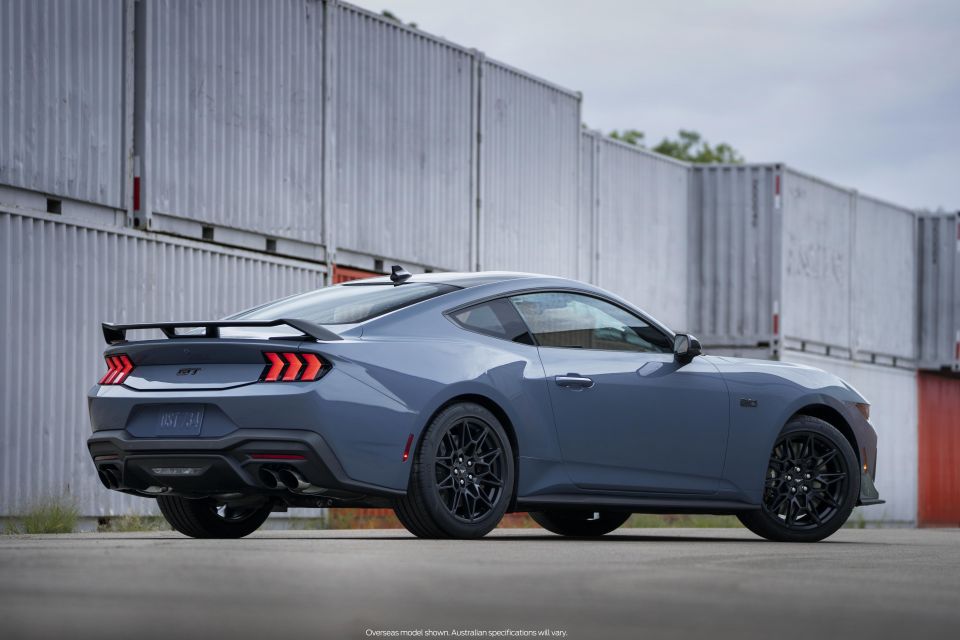
It’s powered by new, fourth-generation versions of the familiar turbocharged 2.3-litre EcoBoost four-cylinder engine and naturally-aspirated 5.0-litre Coyote V8.
A 10-speed automatic remains available with both engines, however the six-speed manual is now exclusive to the V8.
Power and torque outputs and fuel economy figures are still being certified and therefore haven’t been announced, but Ford says the Mustang will have more power, greater efficiency and quicker 0-100km/h sprint times.
The outgoing model’s 2.3-litre produces 236kW of power and 448Nm of torque, while the V8 produces 339kW and 556Nm.
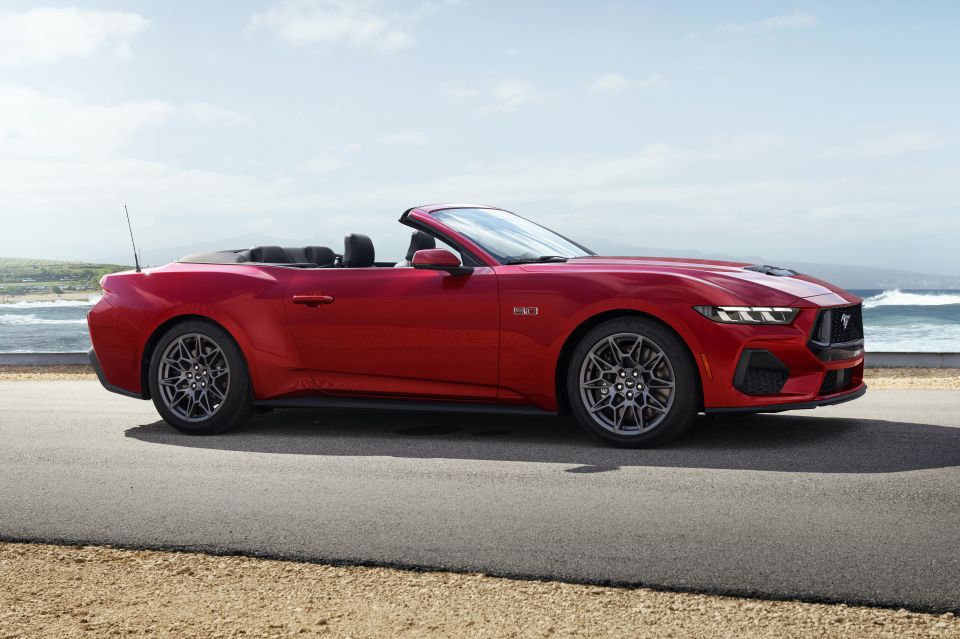
The rumoured hybrid powertrains haven’t eventuated, and they don’t appear to be in Ford’s plans.
“We have a Mach-E, and that is our electrification story,” said Eddie Kahn, vehicle engineering manager for the Mustang.
“We really want to give our customer the choice between an ICE and electrification, so they can go either way,” he added, pouring cold water on the notion of a hybrid Mustang.
Likewise, rumours of an all-wheel drive version haven’t come to fruition.
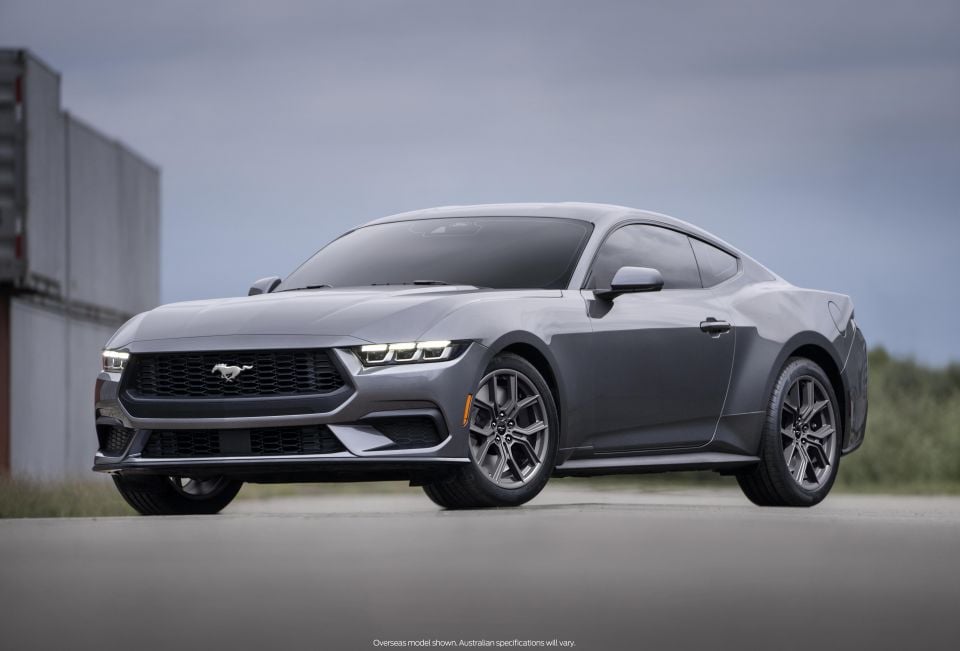
“If you’re a Mustang customer, do you want to have all-wheel drive?” asked Mr Kahn, suggesting the answer for most customers would be no. Of its key rivals, only the outgoing Dodge Challenger offers AWD, and only in V6 guise.
Ford highlighted two new features for the Mustang: the option to remotely rev your Mustang – surely something that will endear you to your neighbours – and a new drift brake function.
The electronic handbrake resembles a conventional handbake, and a special drift mode can be activated via the touchscreen when in Track Mode.
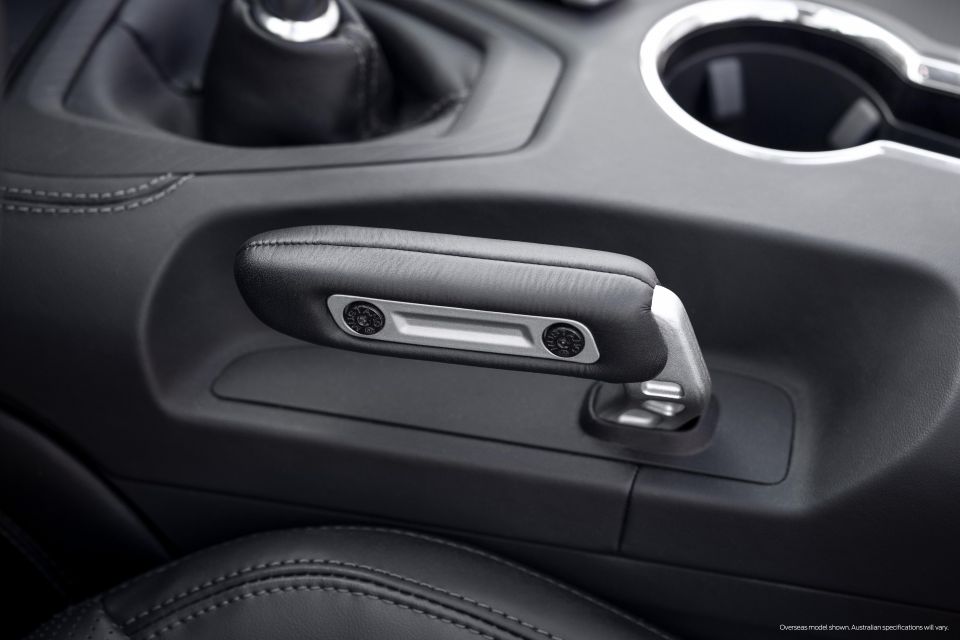
It’s standard on models with the Performance package and comes with selectable modes. Ford says the new brake been designed to help you learn how to drift. It’s unclear as yet if this feature will come to Australia.
The Mustang is underpinned by a version of the sixth-generation’s platform, which Ford says was the “best fit” for the car.
There’s carryover suspension architecture, though there have been some updates here, including new aluminium lower control arms and new rear linkages. The Magneride adaptive damping system remains optional.
Ford says there’s a new steering rack and a faster steering ratio, while it has a new generation of safety equipment including adaptive cruise control (with stop/go on auto models), lane centring, evasive steering assist, and reverse brake assist.
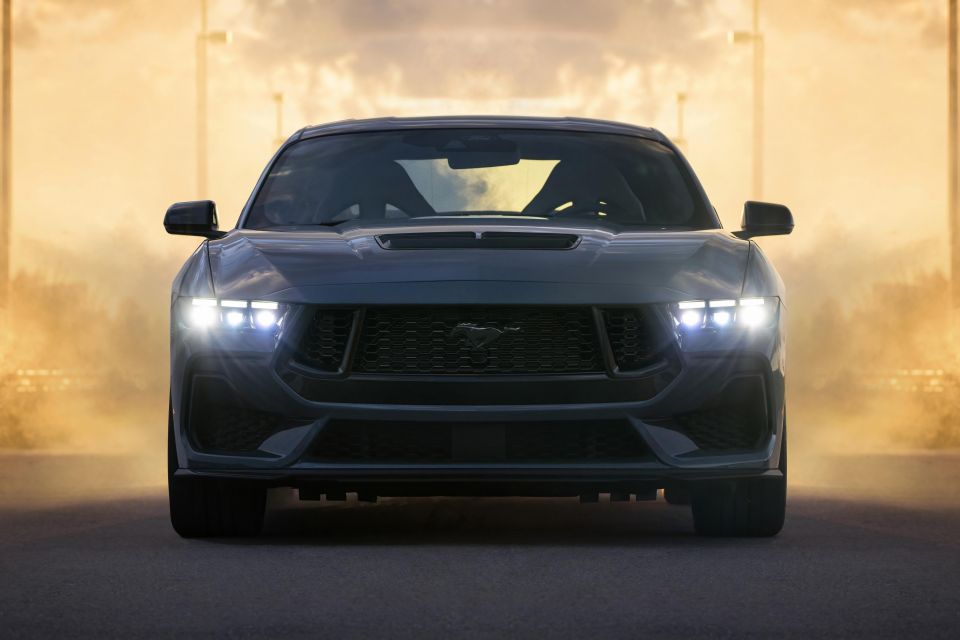
Styling is an evolution of the outgoing sixth-generation model, with Ford saying it wasn’t trying to reinvent the wheel stylistically.
It has, however, sought to add a little bit more muscle car-style aggression to the exterior, as opposed to what it called the more international-focused sixth-generation.
Ford previewed two iterations of the seventh-generation Mustang’s design with focus groups, and the more aggressive of the pair proved more popular and was therefore chosen.
The Mustang’s trademark three-element tail light signature has been echoed up front, with segmented headlights featuring three projectors and three separate daytime running light elements.
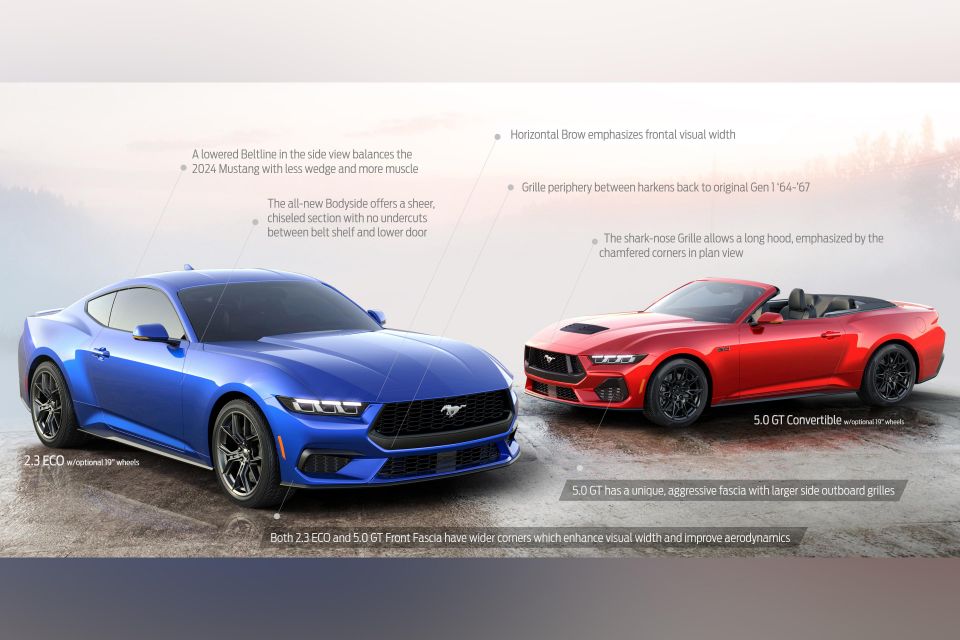
The beltline has been lowered and the detailing is more chiselled, with new sheetmetal and more sheer sides.
A sharper rear undercut also gives it the illusion of looking even wider, though the Mustang’s track width is unchanged.
GT models get a unique front fascia with their own bonnet with a functional vent, and larger, functional lower air intakes.
The GT grille also has unique nostrils, as well as high-gloss black accents. Down back, GT models also get quad exhaust outlets instead of the dual outlets on 2.3-litre models.
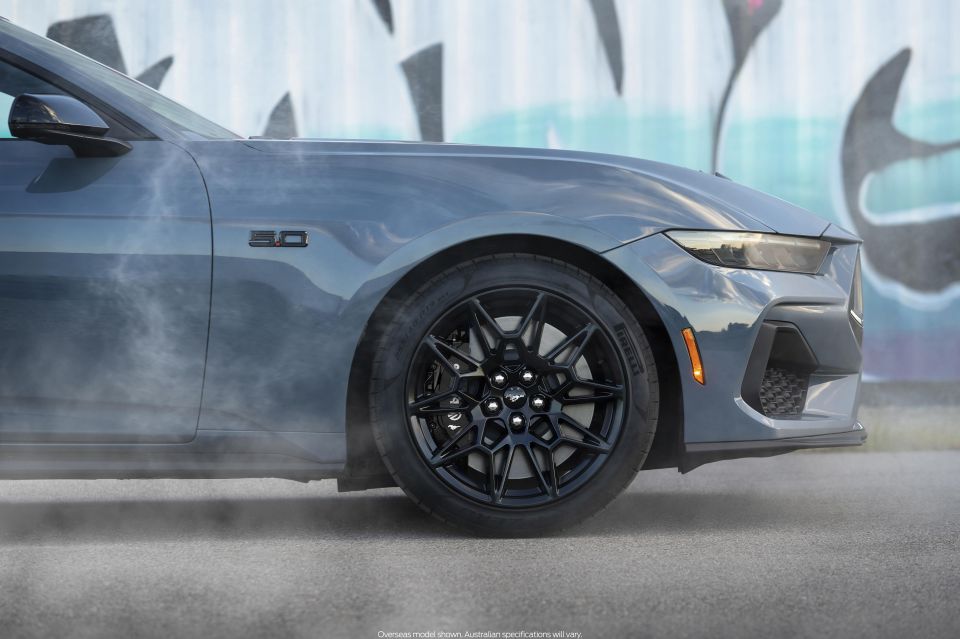
The Mustang will be available in 11 colours, including a solid-looking steely blue that changes in the light and a bright tri-coat Yellow Splash.
Brembo brakes can be had with callipers finished in either grey, black, red or Grabber Blue. There are three available brake packages, with the 19-inch one coming with six-piston fixed front callipers and four-piston fixed rear brake callipers.
Perhaps the greatest stylistic departure comes inside the Mustang, with the dual-cowl – double-brow in Ford parlance – dashboard replaced with a more linear unit.
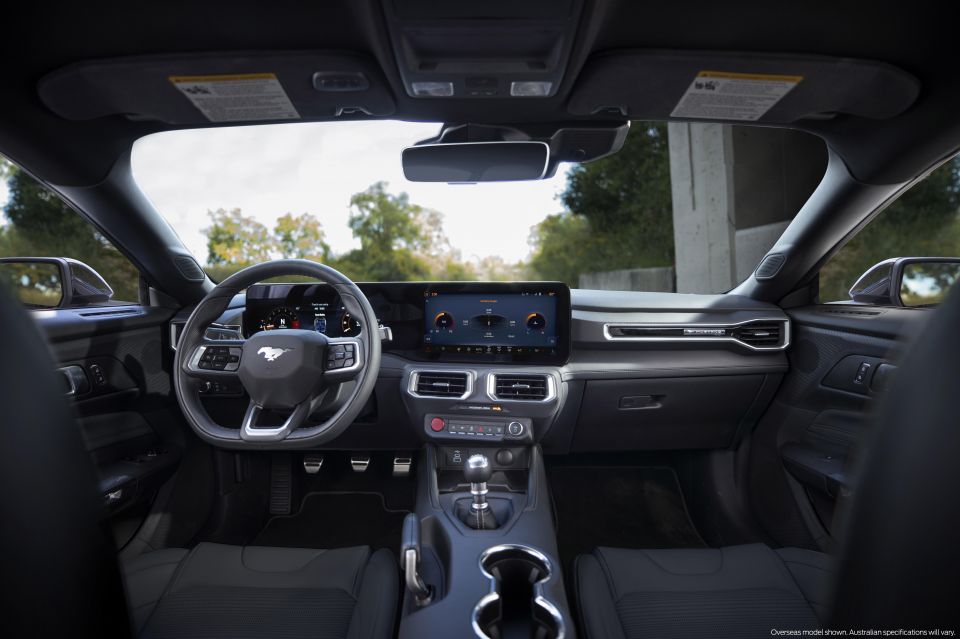
Premium models and up feature a 13.2-inch touchscreen infotainment system and a 12.3-inch instrumentation display a single wraparound housing, while base models feature standalone displays. The touchscreen runs Ford’s latest Sync 4 operating system.
Physical climate controls are gone, replaced with shortcuts at the base of the central touchscreen. There’s a single row of physical switches, including the hazard lights, while underneath these there’s finally a storage shelf, which also includes a wireless charging pad.
All models feature a flat-bottomed steering wheel, a first for the Mustang. Automatic models feature paddle shifters with a silver finish.
Like the outgoing car, the digital instrument cluster features different layouts for different drive modes.
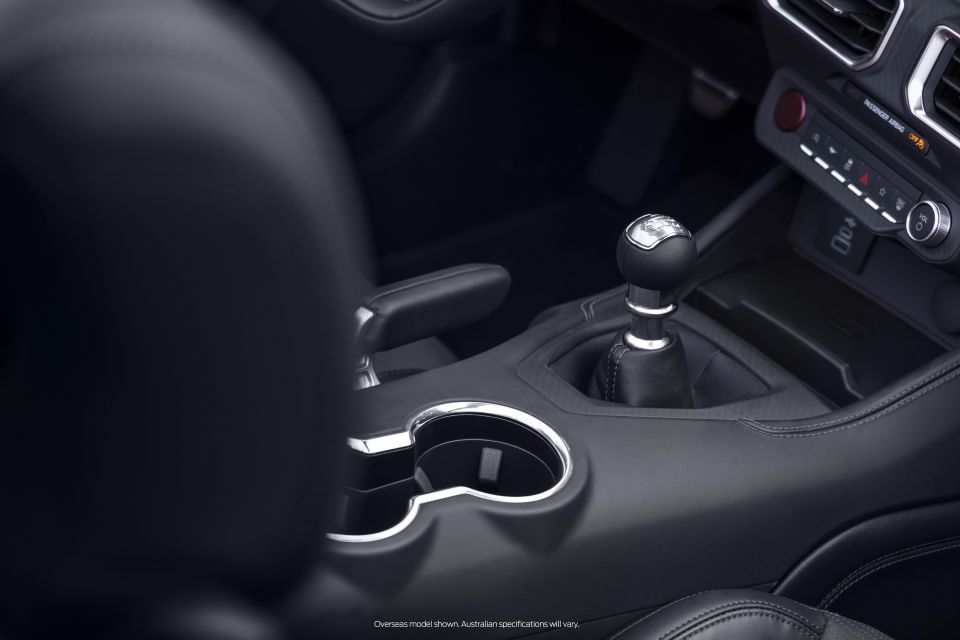
Ford says it looked at the outgoing car’s graphics, as well as those of the GT and Mustang Mach-E, for inspiration, and there are more angular, modern elements with copper-coloured highlights.
In a retro touch, Ford has also developed a 1980s-inspired theme for the digital instrument cluster that simulates the instruments from the long-running 1979-93 Mustang that rode the Fox platform. The numbers even glow green at night in true 1980s Ford fashion.
Functions like the ambient lighting adjustment have moved to the touchscreen, as have auxiliary gauge readouts.
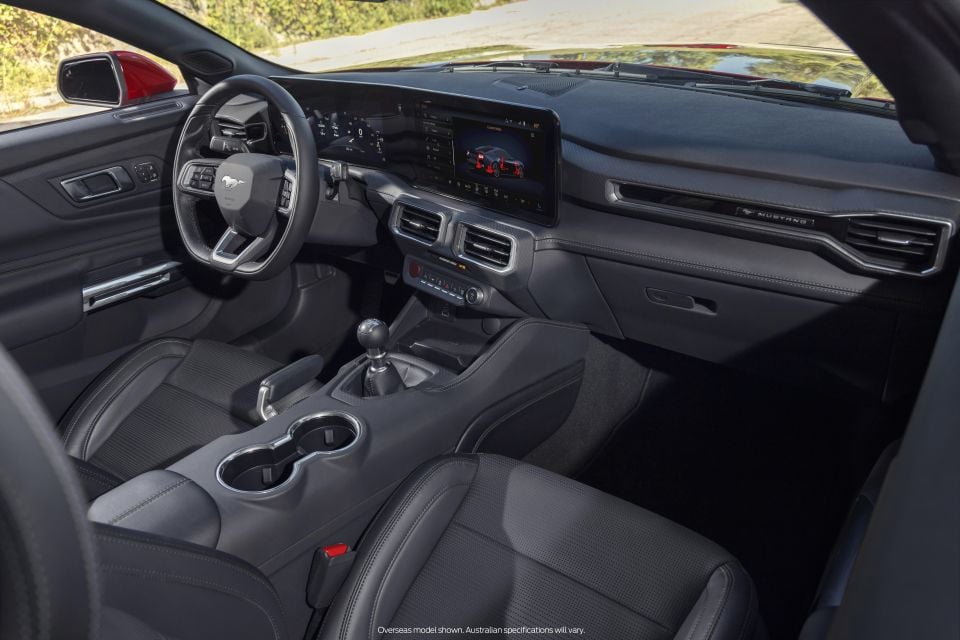
There are USB-A and USB-C outlets, while there also two overhead USB ports designed for you to plug in a track camera.
A black interior colourway is standard, with new Space Grey and Carmine Red options also available. Ford is also introducing coloured seatbelts.
The company says it has moved away from animal grains for its interior trim pieces, instead going for a more technical, laser-cut look.
There’s also extensive use of a faux carbon fibre-look trim called carbonite.
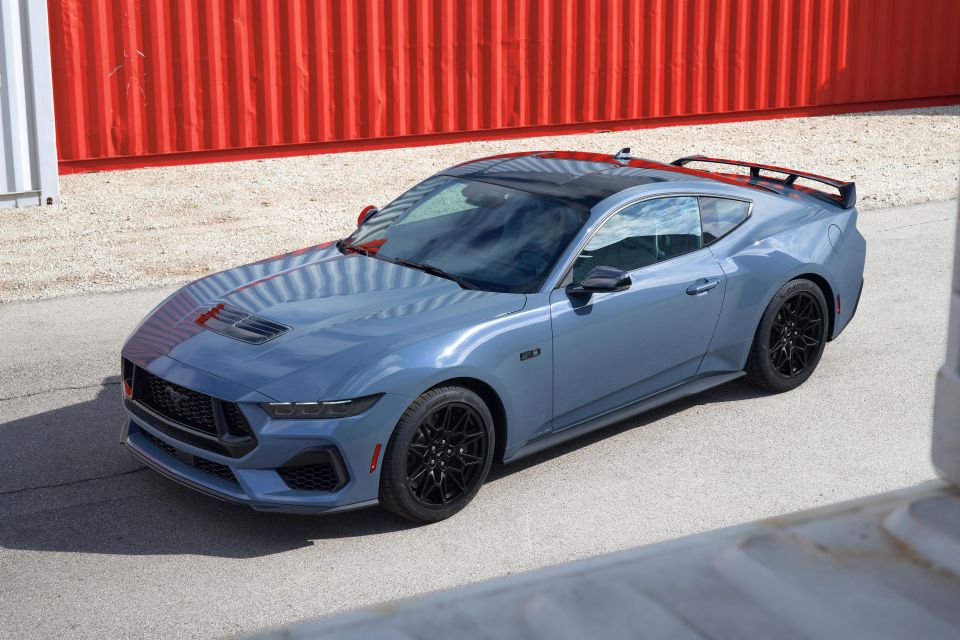
As brands like Jeep have done, there are ‘easter eggs’ to be found around the Mustang. Most notably, coupe models have the silhouettes of all seven generations of Mustangs along the lower edge of their rear window.
Ford says the Mustang has been the world’s best-selling sports coupe for seven consecutive years, and the current model is sold in six of the world’s seven continents.
Its fellow American pony cars, the Chevrolet Camaro and Dodge Challenger, are expected to cede this particular segment.
A Challenger replacement has been previewed with the Charger SRT Daytona concept, eschewing the current car’s V6 and V8 engines for a purely electric powertrain.
MORE: Everything Ford Mustang
Where expert car reviews meet expert car buying – CarExpert gives you trusted advice, personalised service and real savings on your next new car.
William Stopford is an automotive journalist based in Brisbane, Australia. William is a Business/Journalism graduate from the Queensland University of Technology who loves to travel, briefly lived in the US, and has a particular interest in the American car industry.


William Stopford
2 Months Ago
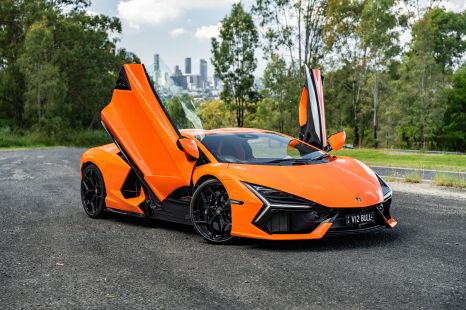

Alborz Fallah
2 Months Ago


James Wong
1 Month Ago


Paul Maric
23 Days Ago


Matt Campbell
14 Days Ago
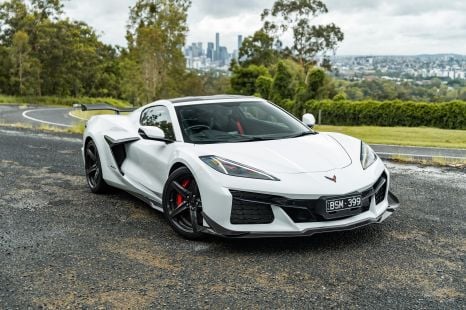

Damion Smy
12 Days Ago